Juan de Fuca Trail Ultimate Guide: Everything You Need to Know
This post is meant for those who have yet to hike the Juan de Fuca Trail but want to – and would like to be as prepared as possible. Here’s what you need to know before you go.
It pays to be prepared when you set off to hike the Juan de Fuca Trail. Even though there are places to leave the trail, most of it is still a wilderness experience. Be sure to carry the hiking essentials, including extra food, go prepared for bears (so carry easy to access bear spray)- and please, leave the Juan de Fuca Trail in better shape than you found it by practicing the Leave No Trace principles.
GOOD TO KNOW: The Juan de Fuca trail will be closed in summer 2025 because of significant storm damage. Apparently “the trail is unsafe and impassable, with damaged bridges, unstable slopes, washouts, fallen trees, and blocked sections. ” The only campsites that are open via day hikes are East Sombrio, Mystic Beach and China Beach which opens May 15.
This post includes some affiliate links. If you make a qualifying purchase through one of these links, I will receive a small percentage of the sale at no extra cost to you. Thank you very much for your support.
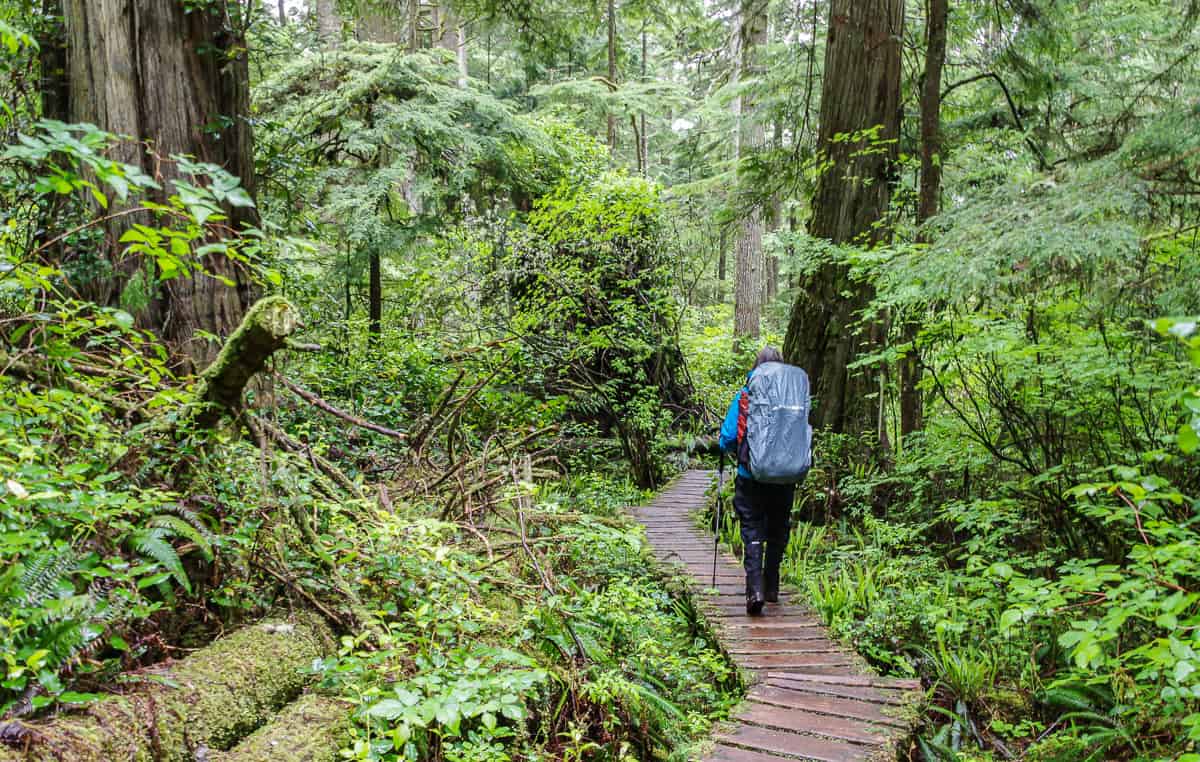
Would you like to save this?
Juan de Fuca Trail Summary
Distance: The Juan de Fuca Trail is 47 km long.
Elevation gain: 1,451 m or 4,760 feet
Time needed: It generally takes 3 – 5 days to hike the Juan de Fuca trail in its entirety
Level of difficulty: Juan de Fuca Trail is considered easier than the West Coast Trail, but that doesn’t mean that it’s “easy”. Come prepared and act safely.
It’s busy: Crowds tend to appear in early July and last until early October.
Dogs: Allowed on leash.
Water: There are lots of water sources, but be sure to bring a portable filter and water purification tablets.
Elevated tent platforms: New in 2023 are elevated tent platforms at five backcountry campgrounds including Mystic Beach, Bear Beach, Chin Beach, Little Kuitshe Creek, and Payzant Creek.
Trailheads: There are two trailheads – Botanical Beach near Port Renfrew (north) or China Beach (south); the northern trail head appears to be busier.
Camping fees: Anyone camping overnight must pay a fee: $10 for 16 years or old, $5 for kids age 6-15, and $20/party per night at the China Beach. You can pay via mail or online.
Campsites: The Juan de Fuca Trail has two forest campsites: Providence Grove and Little Kuitsche Creek. Neither have ocean views. It also has four beach campsites: Sombrio Beach East, Chin Beach, Bear Beach, and Mystic Beach.
Be careful: At high tide, some parts of the Juan de Fuca Trail are impassible (these sections are clearly marked on maps and trails).
Expect mud and water: The trail is commonly muddy and/or waterlogged – come prepared and take it slow!
Thieves: Be aware of thieves on the trail according to the BC Parks website.
Animals: Bear and cougar sightings are possible. We only saw squirrels and seals. Read: Tips for Staying Safe in Bear Country
Juan de Fuca Trail key landmarks & waypoints
- Bear Beach Campsite (about 9 km in, coordinates: 48.45117, -124.16624)
- China Beach Campsite (about 21 km in, coordinates: 48.47249, -124.25471)
- Providence Cove (about 40 km in)
- Little Kuitsche Creek Campsite (about 33 km in, coordinates: 48.50731, -124.33872)
- Sombrio Beach (about 27 km in, coordinates: 48.49463, -124.29754)
- Mystic Beach (about 2.5 km in, coordinates: 48.4368044,-124.1162582)
In-Depth: My Hands-On Juan de Fuca Trail Guide
I did a four-day backpacking trip (more pictures and a day to day account in this post) on the 47 km long Juan de Fuca Trail in early June one year before the crowds appeared.
Located on the west coast of Vancouver Island, a little south of its more famous cousin, the West Coast Trail, its short distance belies the difficulty of the trail.
Before you start planning your trip, check the most recent updates on the BC Provincial Park website. There always seems to be something happening, whether it be trail upgrades, short term closures in specific areas or clearing storm debris like fallen trees. This is particularly true in the off-season between October and May!
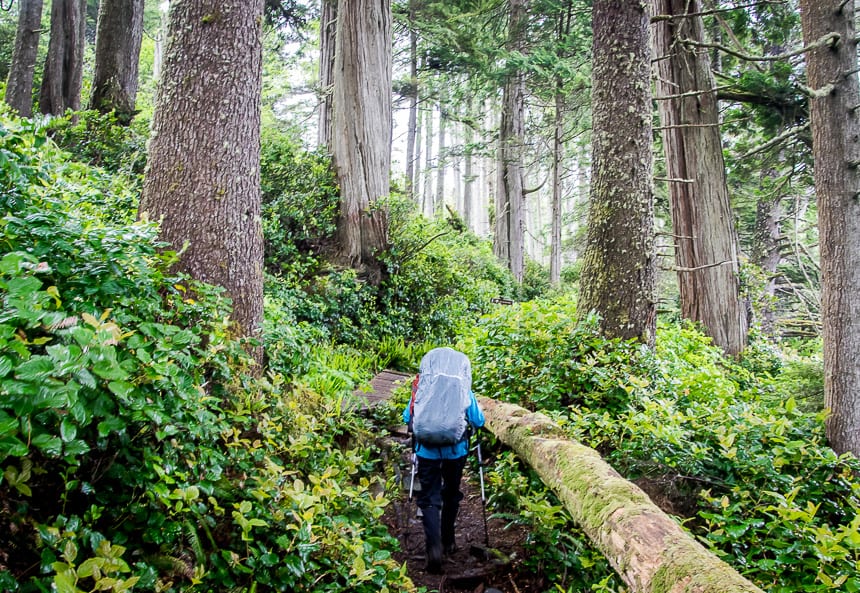
Opening times for the Juan de Fuca Trail
The Juan de Fuca Trail is in theory open year-round and reservations are not required for backcountry camping. The trail is busy from mid-June through to early September, with peak times in July and August.
Campsites are first-come, first-served with the exception of China Beach Campground – which isn’t really on the trail anyway. China Beach can be reserved though there are also first come – first served sites.
My advice is leave early in the morning (by 9 AM) so you get to the next campsite in good time and have a choice of campsites. In peak periods, some campsites like Chin Beach will be extremely crowded and nice sites will be at a premium. We saw people camping near outhouses – not the wilderness experience you’re probably looking for.
Trailheads on the Juan de Fuca Trail
If you’re planning to backpack the entire length of the Juan de Fuca Trail then you’ll need to decide whether to start at Botanical Beach near Port Renfrew in the north or at China Beach at the southern end, located just north of Jordan River.
The driving time between the two trailheads is approximately one hour. I wouldn’t say one is better than the other though my impression was that there were more people hiking north.
If you have a couple of cars you can do a shuttle leaving one at each trailhead. We chose to start at Botanical Beach so we could walk out to a waiting car at the end. I made a reservation on the West Coast Trail Express for a pickup on the highway at the China Beach Provincial Park Day Use Trailhead. (Drive down about 100 m and the parking lot is on your right. The trailhead is right there too.)
Just make sure you’re there in plenty of time as the bus won’t wait. Also, make sure you’re waiting on the far side of the highway in the pull off a few metres north of the entrance to China Beach Provincial Park. (We were not and had to flag the bus down as it wasn’t planning to stop!)
You can also pick up the bus in Victoria. At the end of the hike you can take a bus from Port Renfrew back to China Beach or Victoria.
There are several other access points to the trail if you’re interested in doing only day hikes or a shortened version of the trail. You can get to the trail via Sombrio Beach and Parkinson Creek. Locals know of a road that gets to a trail that takes you to Bear Beach but I’m not sure of its location.
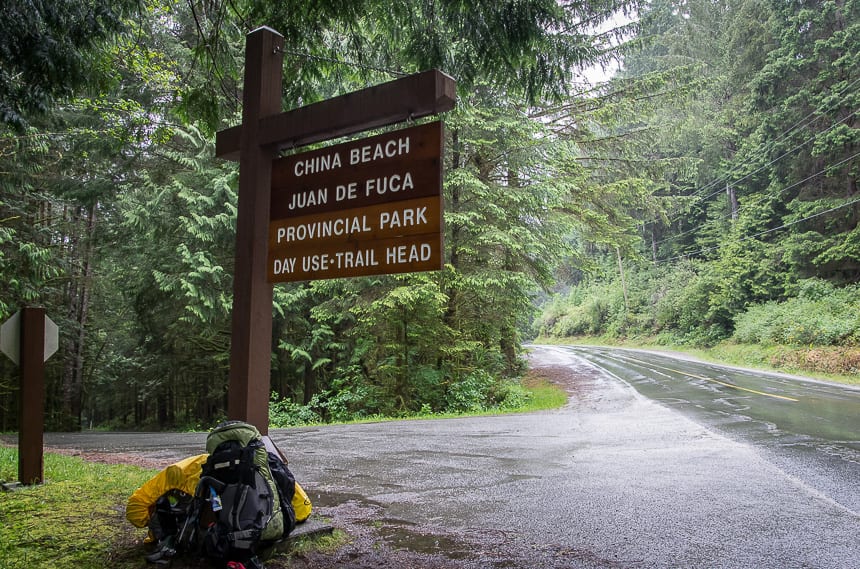
Camping Fees on the Juan de Fuca Trail
Everybody that camps overnight needs to pay $10 per night if they are 16 and older. Kids (6-15 years old) are $5 per night and there is a fee of $20/party per night at China Beach.
You can use a self-registration envelope and pay at the trailhead. I found it more convenient to pay online, especially as I knew we’d be rushing for the bus. Information on how to do that is here.
Campsites on the Juan de Fuca Trail
Everyone is asked to camp at established camping areas to minimized impact. All campsites come with outhouses (toilet paper included) and bear boxes.
There are two forest campsites – Providence Cove (around Km 40) and Little Kuitsche Creek (Km 33). These in my opinion are the least desirable campsites because you don’t have any ocean views. And as you can see in the photo below, not all of the tent sites are well-drained.
Unless you hike all the way from Sombrio Beach to Botanical Beach – a very long go – you’ll have to choose one of them. At least at Little Kuitsche Creek it is possible to hike down to the ocean and enjoy a view.

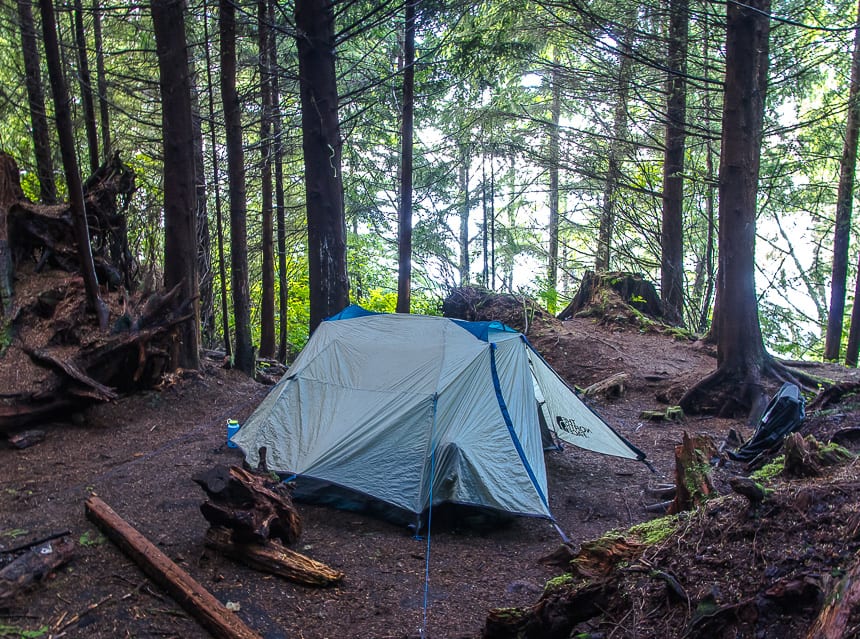
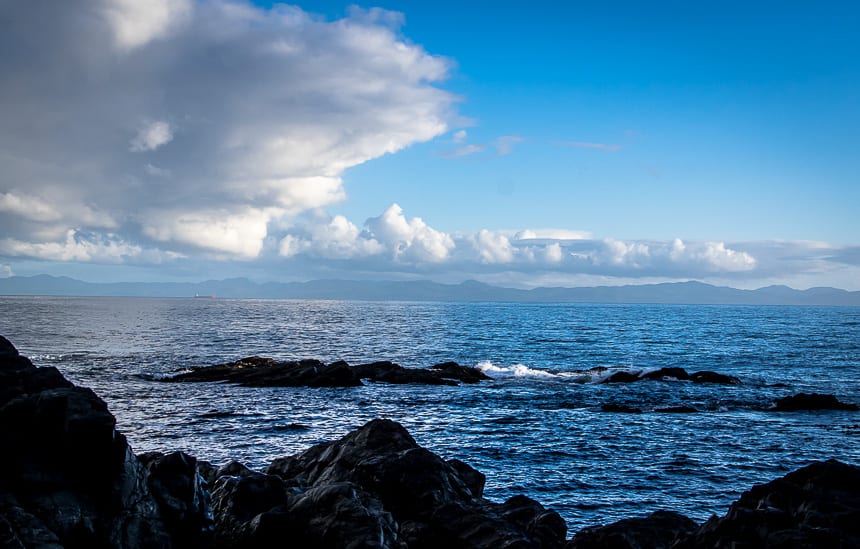
Beach campsites on the Juan de Fuca trail
The beach campsites are found at Sombrio Beach East (~Km 27-28), Chin Beach (Km 21), Bear Beach (Km 9) and Mystic Beach (~Km 2.5). Sombrio Beach would be a great spot for the night if it works with your hiking schedule.
We stayed at Chin Beach – on a bench above the beach and watched high tide come crashing to within about four feet of our tent around midnight. If you camp on the rocks make sure you’re above the high tide line!
Bear Beach has some lovely campsites particularly at the southern end of the beach near a large creek. Mystic Beach gets very busy with lots of people who aren’t hiking the Juan de Fuca Trail.
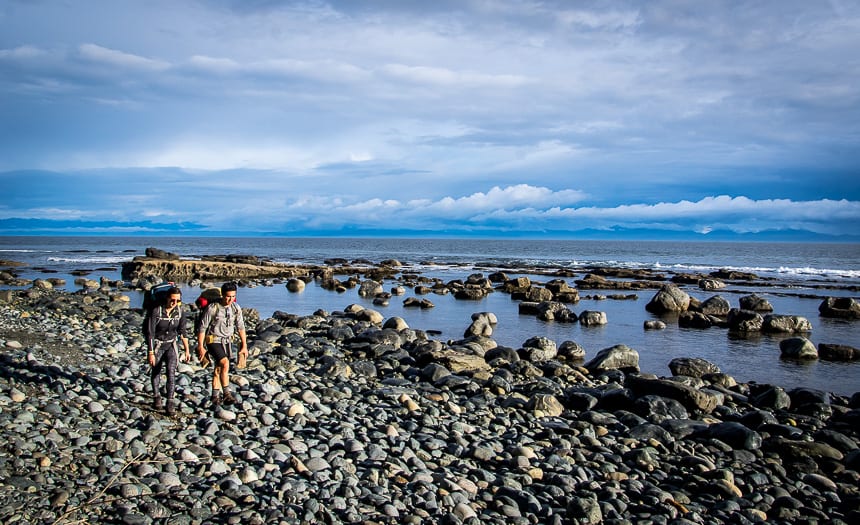
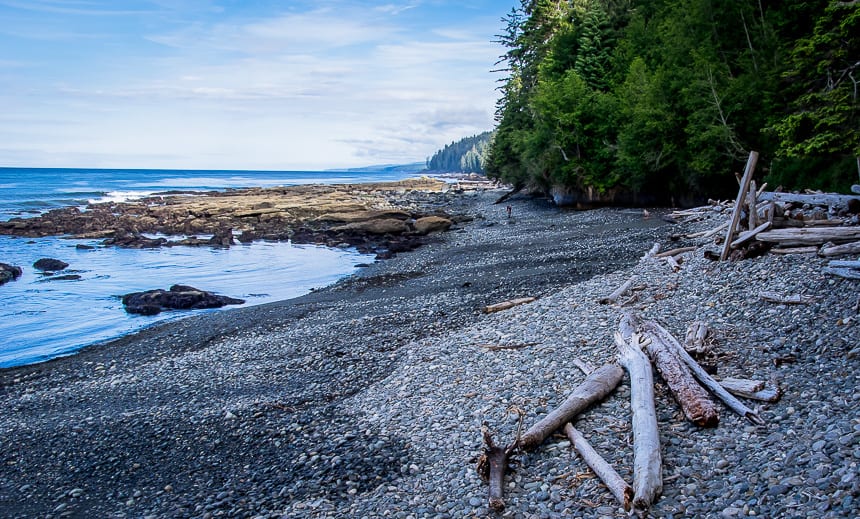
The Juan de Fuca Trail at high tide
Some parts of the Juan de Fuca map are impassable at high tide. These sections are clearly marked on the maps and trails. For planning purposes and so you don’t have any surprises its well worth downloading the tide charts beforehand. Use the Port Renfrew section.
You will also find tide tables at the trailheads and anywhere there are large boards with maps. Don’t forget to use Pacific Daylight Savings Time for tide times between March and November.
Look for orange balls on the beach as they indicate an exit onto the trail.
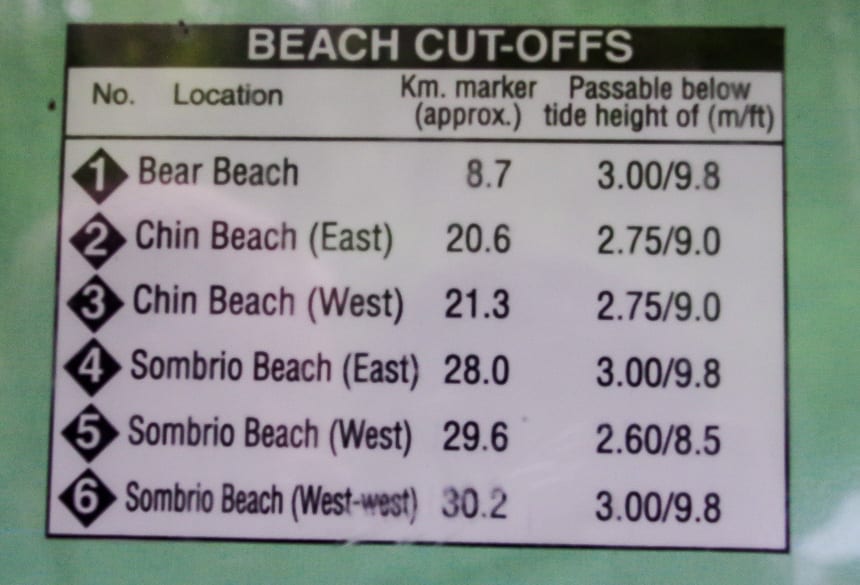
What to expect hiking the Juan de Fuca Trail
Even though there are people that run the Juan de Fuca Trail in one very long day – and we saw about a dozen of them – most people opt to backpack it over three to five days. We took four days which felt like the right amount of time, considering we averaged about 2 km/hour except for the first three and last five or six kilometres which were some of the easiest on the trail.
Just because a trail is along the coast and not in the mountains, does not make it an easy trail. Try the day hike on the Coastal Trail in nearby East Sooke Provincial Park for a taste of what you’ll be in for. While it’s easier – without the mud and as much elevation change – it’s a good warm-up for what lies ahead.
The Juan de Fuca Trail has plenty of ups and downs especially on the section between Chin Beach and Bear Beach. One gentleman we met who looked completely bagged called this section “dreadful.“ (It was our favourite as there wasn’t much mud.)
Expect hours of negotiating mud if its rained at all, slippery boardwalks, roots that are designed to trip you, occasional downed trees, slimy tree trunks and rare sections of lovely flat hiking interspersed with beautiful beach walking if you time the tides right.
Suspension bridges, ladders and beautiful sections of rainforest walking round out what you encounter.
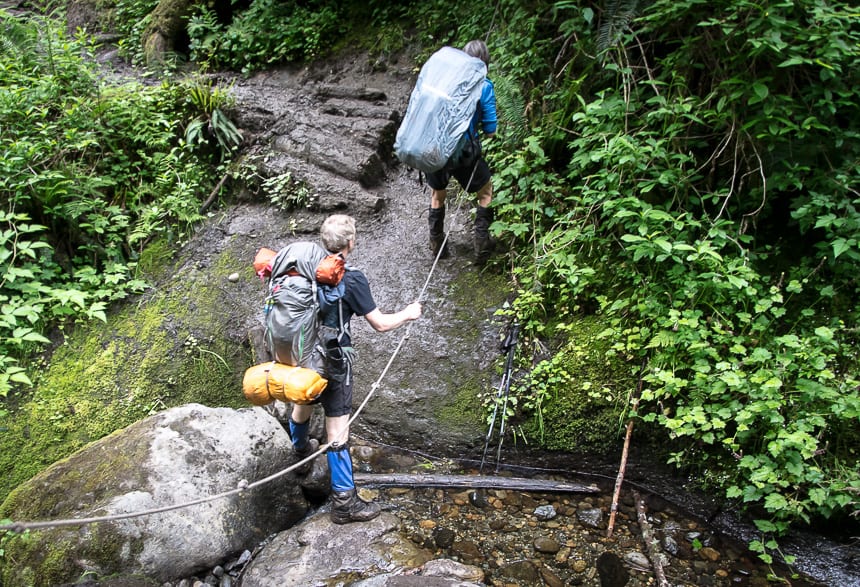
Our route on the Juan de Fuca trail heading south looked like this.
For a detailed day by day account (versus the synopsis below) along with a lot more photos, read A 4 Day Hiking Trip on the Juan de Fuca Trail.
Day One – Botanical Beach to Little Kuitsche Creek
Distance and time: 14 kilometres in about seven hours.
Lots of mud; beautiful forest section but overall our least favourite day. It was a slog at times but Botanical Beach at the beginning was a treat.
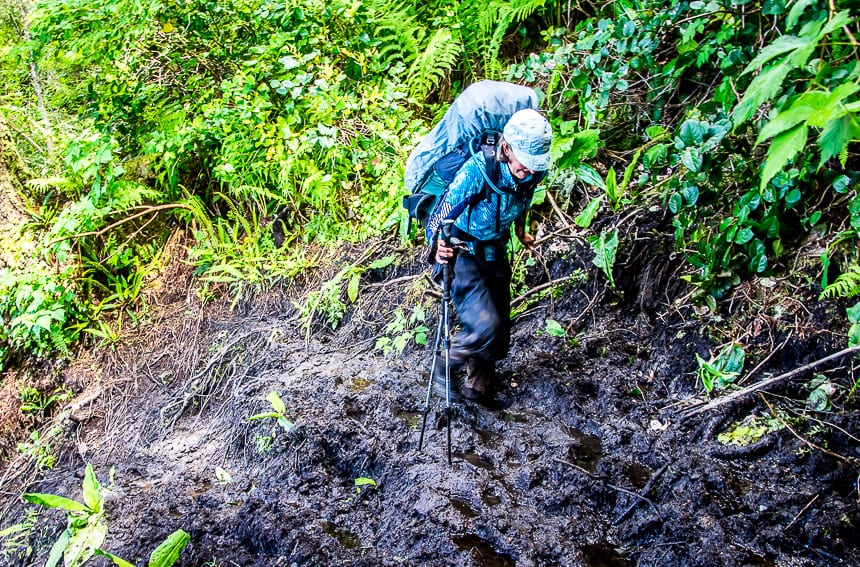
Day Two – Little Kuitsche Creek to Chin Beach
Time and distance: 12 kilometres in about six hours.
Lots of mud again, one delightful flat as a pancake section through forest, beach walking with tide pools, Sombrio Beach and three suspension bridges. The last 0.5 km to the campsite at Chin Beach was fantastic – as was Chin Beach. Camp high or you’ll be swimming at night.
A new food cache is being installed at Chin Beach in the fall of 2021 – but in the meantime you’ll need to hang your food. Don’t forget a length of rope, a carabiner or two and a waterproof bag for your food.
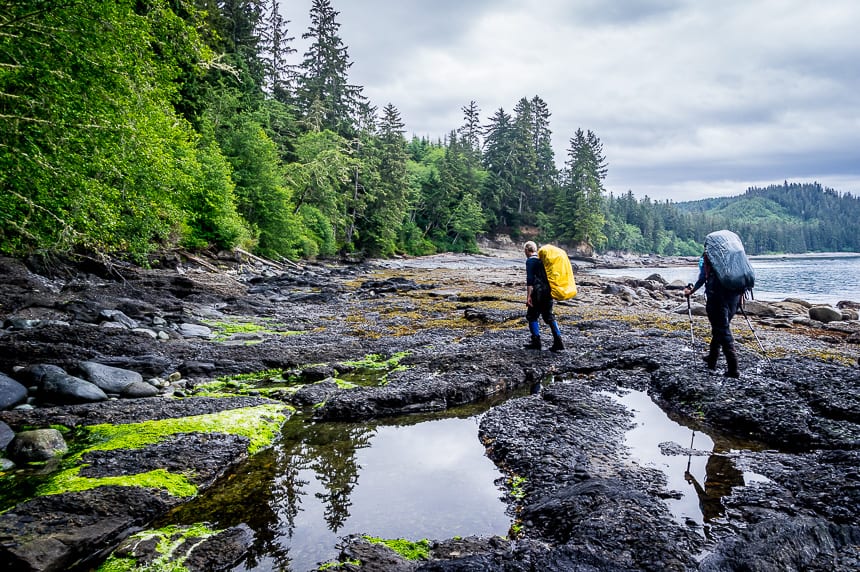
Day Three on the Juan de Fuca Trail – Chin Beach to Bear Beach
Distance and time: 12 kilometres in about 5.5 hours.
Count on about a dozen steep ups and downs to bypass creeks but far less mud. The most aerobic part of the Juan de Fuca trail and the least favourite day of most people because of all the climbing and descending

Day Four – Bear Beach to China Beach
Distance and time: 9 kilometres in about four hours,
The last day on the Juan de Fuca Trail was the easiest day by far. Mystic Beach is lovely for lunch but very busy for camping. We missed the peace and quiet in no time when we got here, even though it was pretty.
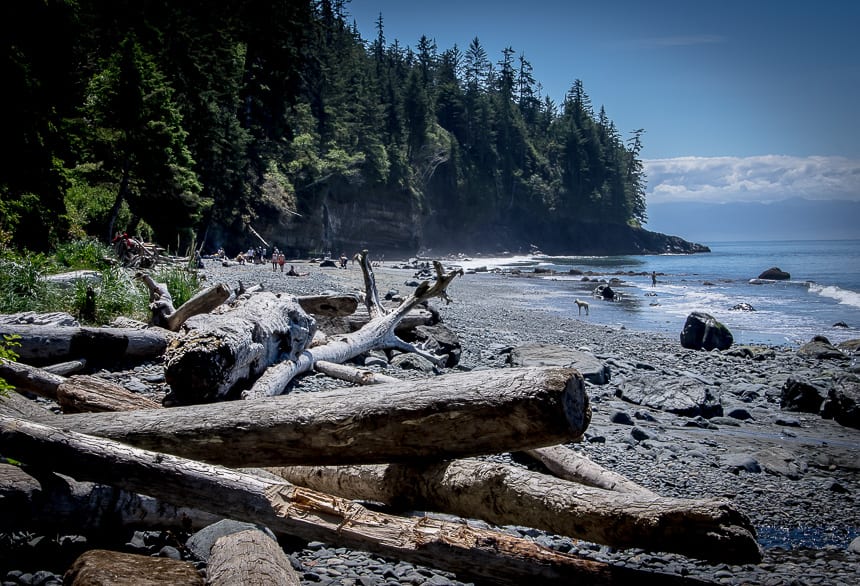
Location map of the Juan de Fuca trail
Other useful information for the backpacking trip
Leave valuables at home. Break-ins are a huge problem in the parking lots.
I’d recommend buying a Juan de Fuca trail map before you leave from home. This book has one.
You can have campfires on the beaches but carry a lightweight stove like this one that can boil water in 100 seconds, especially as you’ll need it for cooking in the forest.
Water needs to be treated. You only need to carry one bottle of water as there are loads of places to fill up. I like the lightweight SteriPen along with water purification tablets as a back up.
Gaiters really helped keep the mud and small stones out of our boots.
Hiking poles are useful in mud and for helping to keep your balance in slippery sections. I like the collapsible super light-weight poles. Consider carbon ones as an investment.
Good rain gear is essential. I swear by my Arc’teryx jacket– a long term investment piece.
Don’t forget a rain cover for your pack. Make sure its big enough to cover the whole pack when it’s stuffed.
Before you go, get into shape and do something aerobic a few times a week. It will make the trip far more pleasant and decrease the chances of an injury.
My cell phone never worked on this trail though there are several exit points should you have an emergency. There is also an emergency shelter immediately south of Chin Beach at the top of the cliff. Keep your cell phone in a waterproof case!
Carry lots of high energy bars and food. Backpacker Magazine suggests for a strenuous day of backpacking – which most of these are – you’ll burn 25 to 30 calories per pound of body weight and even more if your pack is super heavy.
Where to stay the night before you start the Juan de Fuca hike
The night before we stayed at thePrestige Oceanfront Resort. Apart from the fabulous views, it’s got a mini-fridge in the room so you can keep your food cold, a great dining room and it’s only a 30 minute drive to the parking lot at China Beach.
Stop in at the Coastal Kitchen Café in Port Renfrew for breakfast before beginning the trail.
If you end in Port Renfrew grab a beer while you wait for the bus at the Renfrew Pub. If you have a big appetite as you’re driving home stop at Mom’s Cafe in Sooke for a piece of their famous apple pie. Each slice has about seven apples!

Final thoughts on the Juan de Fuca hike
I’m very glad I hiked the Juan de Fuca Trail but I was equally happy when it was over. I suspect most people feel that way but as usual we met many people who were doing it for the second, third and even the fourth time. I think they forgot about how much their feet and shoulders ached by the end.
Because the Juan de Fuca trail is becoming so popular, give serious consideration to hiking it in the shoulder season.
There’s nothing I hate more than wondering if all the good campsites will be taken by the time I get there. That’s less of an issue in the shoulder-season and the weather can still be excellent if you have Lady Luck on your side.
More suggestions for coastal multi-day hikes in BC
For those of you who love the coastal hikes in BC, I highly recommend the 4 – 6 day Nootka Island Trail, accessed primarily from Gold River or Tahsis. We literally had the trail to ourselves the third week of September and we saw more wildlife on this hike than on any other!
If you’re keen to visit northern Vancouver Island, check out the muddy but fabulous Cape Scott Trail. And after completing the North Coast Trail in August 2024, I can recommend it though it is harder than the West Coast Trail.
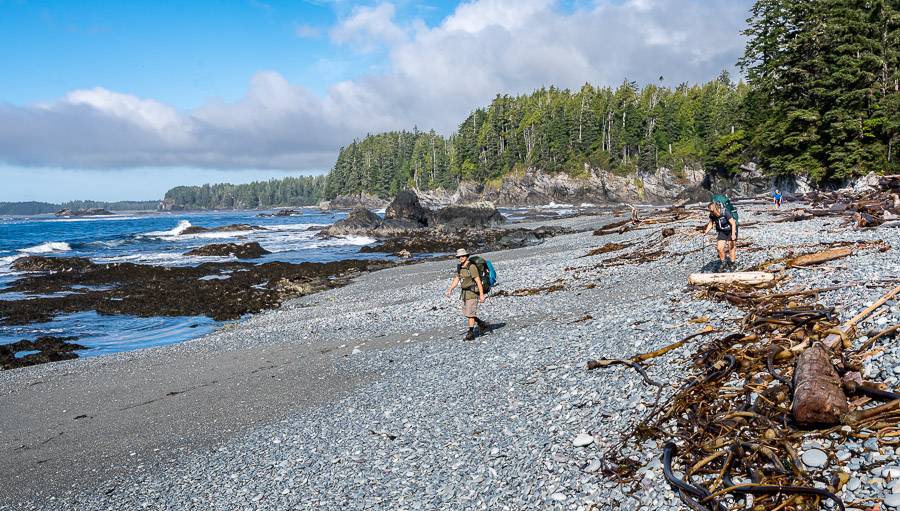
Further reading on Vancouver Island area hiking
- Hiking in Victoria BC – A Couple of the Must Do Trails
- A Guide to Hiking the West Coast Trail
- The Kwai Lake Loop on Vancouver Island
- Must Do Hikes on Salt Spring Island
- Ripple Rock Trail Near Campbell River, BC
Click on the photo to bookmark to your Pinterest boards.
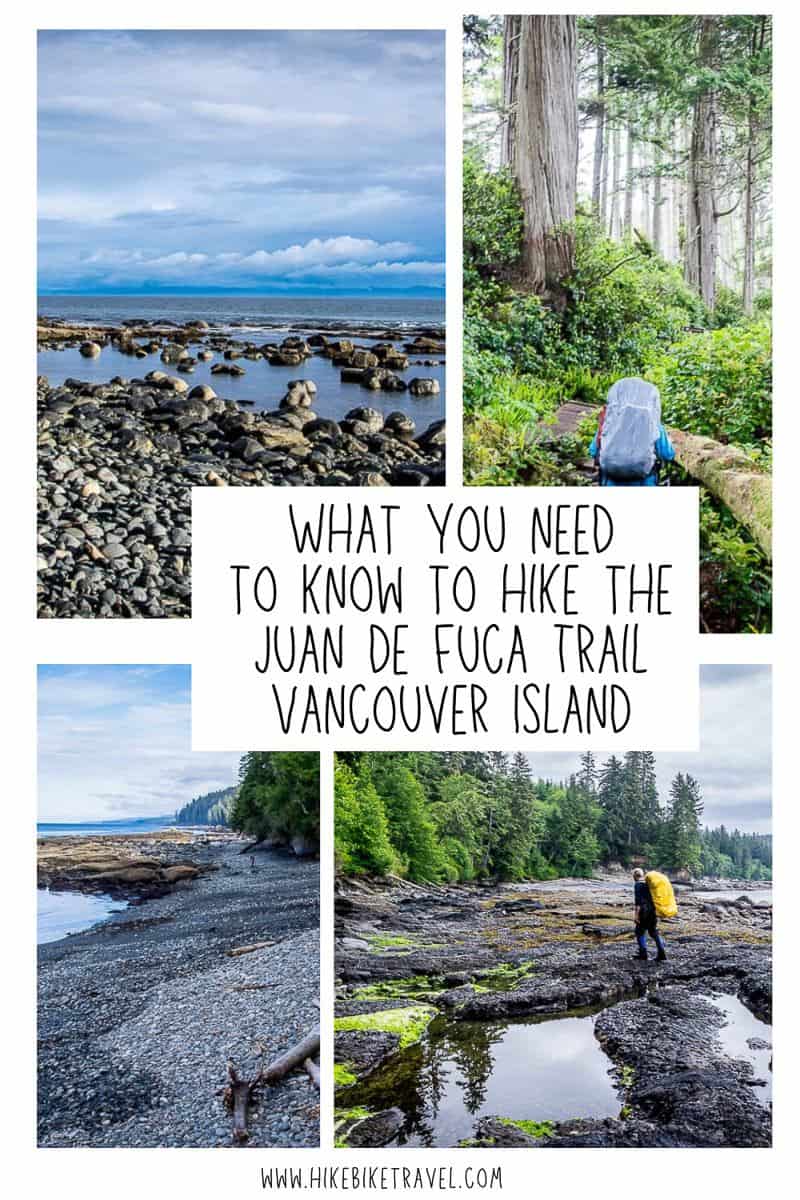
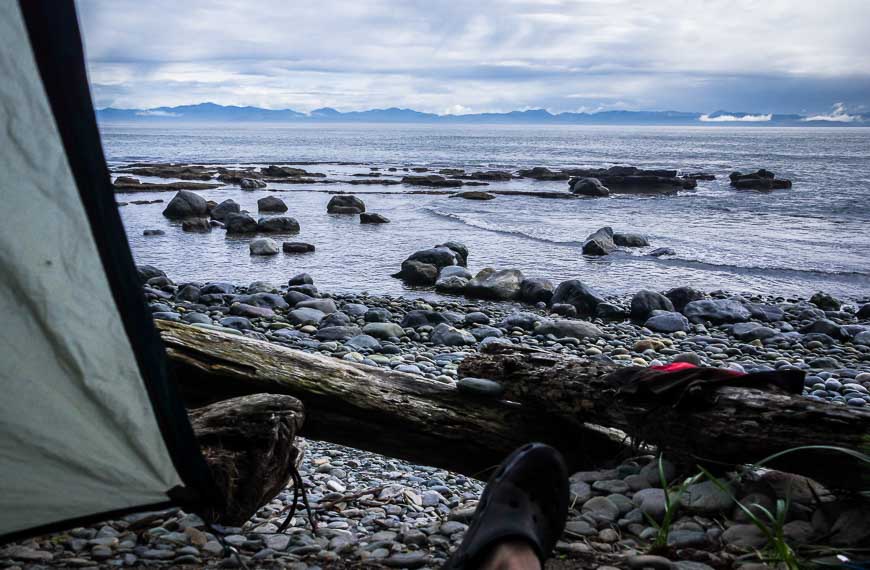
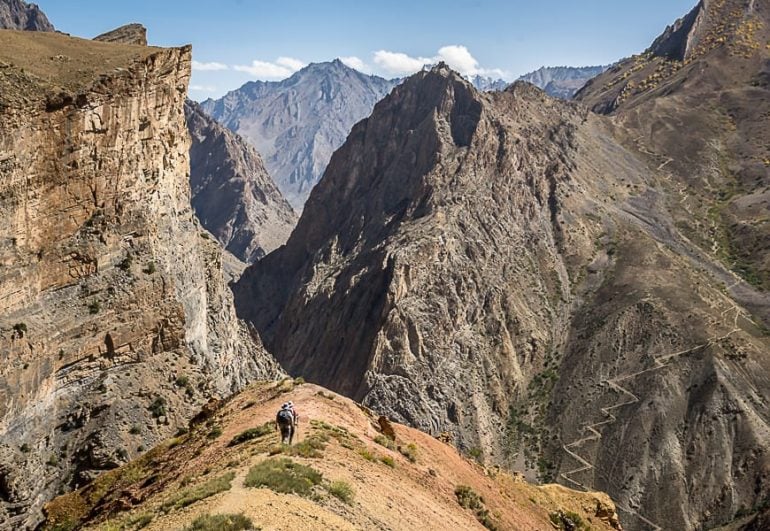
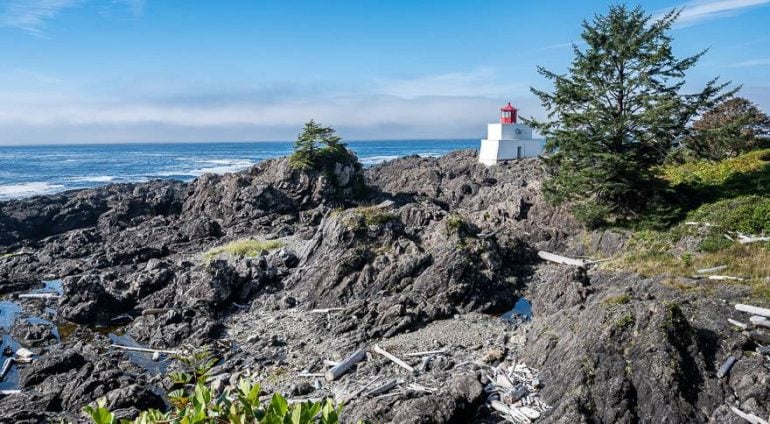

What was seating like? Were there any tables/benches at any locations or was it mostly sitting on rocks and logs? Would you recommend one of those ultra lite folding chairs or just a pad?
Hi Chris – A blow up seat pad would definitely make your life more comfortable in camp as there is nothing. If you’re traveling light or you don’t mind s bit of weight the ultra-lite folding chair would be a big bonus. You could probably rent it out.